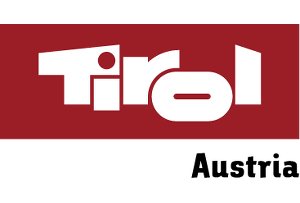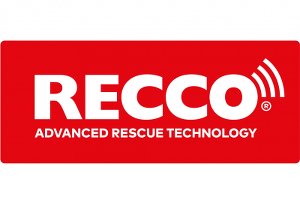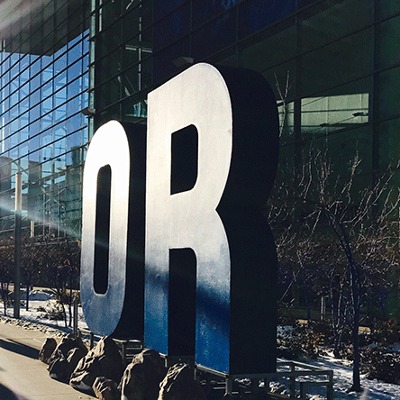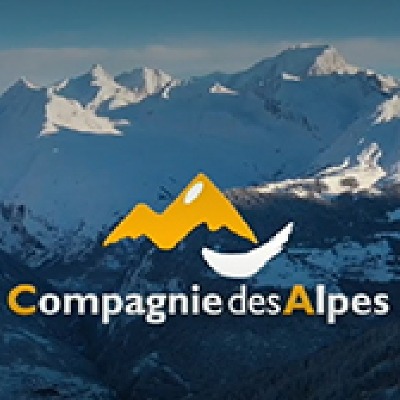Interalpin: The Possibilities Of Doppelmayr Cable Cars For Urban Passenger Transport

Mobility is one of the most important issues of our time. On the one hand, this concerns multimodal concepts for local public transport that can create new connecting points in urban and suburban areas. On the other hand, the means of transport used must be sustainable to ensure a successful green transport transition in Europe. While public transport networks primarily conjure up images of buses and trains, the aerial cableway, with its ability to easily close gaps in the system, opens up completely new opportunities for transport planners to relieve congestion on local public transport. The goal should be to significantly reduce travel times. At the same time, the cableway is a reliable means of transport that offers, among other things, low operational risks, simple network integration, rapid and cost-effective construction, a small ecological footprint, low land use, accessibility, and a digital control system with autonomous operation.
NEW POSSIBILITIES FOR URBAN MOBILITY
Why, then, have aerial cable cars in Europe so far been used primarily in ski resorts and not more often in cities? The concern often cited is weather- and wind-related operational disruptions, which could lead to disruptions in the public transport network. Yet cable cars are based on tried-and-tested technology that has proven itself in the extreme climatic conditions and terrain of the Alpine region over a century of history. Added to this is the development of new systems that combine the simplicity of a monocable gondola with the power of a three-cable system. This allows for high wind stability of up to 110 km/h despite compact stations and components. The three-cable system consists of a traction cable that moves the cabins and two supporting cables that form a wind-stable track. The basis is a carriage, with clamps gripping the cable from above providing the necessary support, while the carriage rollers ensure smooth, low-friction running. The simple cable routing minimizes the forces exerted when crossing the supports, resulting in low maintenance requirements. At the same time, the use of round tube supports ensures a small footprint on the ground and enables quick and easy installation. This allows cable car projects to be completed in just six to 18 months. In addition, they require little space, as only the supports and stations require ground space. Last but not least, these cable car systems offer long cable spans, which means fewer supports are needed. This makes them perfect for overcoming large obstacles – whether in alpine or urban areas.
But modern cable cars are also impressive when it comes to transport, as they can carry 8,000 people per hour in each direction. By adding additional cabins, their use can be quickly adapted to current demand, reducing waiting times during peak travel times. Compared to the average road speed of 21 km/h in Vienna, 18 km/h in Berlin, and even just 17 km/h in Stuttgart, a tri-cable car is significantly faster at 25.2 km/h. Each cabin can accommodate up to 20 passengers and allows for flexible control of passenger flows in the station area thanks to door concepts on both sides. In addition, there is a modular seating arrangement for precise adaptation to the respective use and level boarding and alighting with electric doors for barrier-free access. This means that passengers with walking aids, strollers, or bicycles can use the cable car without any problems. In addition, cable cars can be operated autonomously: the system monitors the entry and exit of passengers and stops if necessary, ensuring safe and economical operation by saving on personnel.
Why shouldn't the advantages and possibilities of a modern aerial cableway, which work wonderfully in alpine regions, be used in urban and suburban areas? While it has long been an important part of local public transport in Latin America, Central America, and Asia, it is still considered an exotic option in Europe. Yet there are plenty of applications here too – be it crossing large bodies of water and green spaces, multi-track rail and road routes, or the revitalization of derelict urban areas. Because it can be easily integrated into existing public transport networks, the aerial cableway offers transport planners new application scenarios for better coordinating different modes of transport. In this context, it can take on certain functions by expanding existing transport networks, closing gaps in the system, providing localized relief, or serving as a bridge.
Due to their small footprint on the ground, they can even be integrated into densely built-up areas. The cable car supports are placed wherever they best fit the situation, while the urban space can continue to flow freely between them or be used as a meeting place. This means fewer areas are sealed and existing buildings are preserved. This also makes them independent of ground traffic: their cabins simply float over traffic jams and congested streets, transporting passengers to their desired destination without any additional loss of time. In addition, their construction processes are optimized through the use of prefabricated elements for supports and stations. This not only enables short completion times but is also significantly more cost-effective than inner-city railway construction, line extensions, or new tunnel construction. The cost ratio of cable cars to subways is now at least 1:10. Furthermore, aerial cable cars are almost silent, thus contributing to a better quality of life in the city.
THE CABLE CAR AS A SUSTAINABLE MEANS OF TRANSPORT
Another advantage of the cable car is its sustainability. According to estimates, by 2050, 66 percent of the world's population will be living in cities. At the same time, the transport sector is responsible for almost a quarter of the world's CO2 emissions, and this trend is rising. Accordingly, it is urgent to create mobility that is sustainable due to its energy efficiency, low emissions, and a small ecological footprint – especially in urban and suburban areas. The cable car scores highly in this regard with its low CO2 footprint. Due to its central electric drive, no local emissions such as nitrogen oxides (NOX) or particulate matter are generated. Using renewable energy, the cable car is CO2-neutral. A scientific life cycle analysis by Düsseldorf University of Applied Sciences, carried out in collaboration with denkstatt GmbH, shows that the cable car produces less than a quarter of the tons of carbon dioxide equivalent (tCO2eq) of other means of public transport.
And importantly for transport planners: There are now database-based CO2 calculators that can be used to transparently depict the overall ecological impact of cable car systems. Based on a functional unit that aggregates various mobility requirements such as necessary connections, required transport capacity, operating times, and years of operation, life cycle assessments for cable car systems can be created and their impact on the respective mobility project can be quantified holistically across all life cycle phases. Individual cable car stations can also contribute to a more sustainable infrastructure: For example, green roofs improve air quality. The plants filter dust and pollutants from the air, provide new habitats for butterflies and insects, and absorb ambient noise. At the same time, rainwater is retained, which relieves the burden on the sewer system during heavy rainfall events. Furthermore, green roofs help reduce both the inner-city temperature and the interior temperatures of the respective station building in summer. With an integrated photovoltaic system, the cable car station can even become a power generator, which, in conjunction with efficient energy storage systems, relieves the burden on the electrical energy supply.
CABLE CARS FOR LOCAL TRANSPORT IN GERMANY AND EUROPE
Although aerial cable cars are still considered a novelty for urban and suburban public transport in Europe, there are already several projects that demonstrate how they can be integrated into public transport networks. One example is the Câble 1 (C1) project, which is currently being implemented in the greater Paris area and is scheduled to go into operation in 2025. The planned cable car line will run southeast of Paris's city center for a total length of 4.5 kilometers and connect four municipalities in the Val-de-Marne department with a catchment area of approximately 20,000 inhabitants. The project exemplifies the applications for which aerial cable cars are suitable in public transport and how they can optimize traffic management: For example, the Câble 1 (C1) line runs for three-quarters of its length along a regional road and parallel to a TGV railway line and the Marne River. In doing so, it creates new connections within the urban fabric by overcoming obstacles such as large railway tracks. With its five stations, it connects various metro, bus, and regional rail lines, helping to ease feeder traffic. At the same time, it allows facilities such as hospitals and schools to be better integrated into the transport network.
A similar situation exists with the Téléo cable car line in Toulouse, which crosses the Garonne River and the Pech David, a hill in the south of the city, over a distance of three kilometers. It connects three important transport hubs and provides connections to existing metro and bus lines. This not only relieves traffic congestion but also offers views of the Toulouse urban landscape and the Pyrenees. In Germany, this has so far only been seen at the Federal Horticultural Shows in Koblenz or, currently, in Mannheim. There, a two-kilometer-long cable car connects the Spinellipark and Luisenpark exhibition grounds. It is powered by green electricity and is partly made of reused elements: the cabins and station components were already in use at the Dutch flower exhibition Floriade in Almere in 2022. And, as in Almere, the roofs of the cable car in Mannheim are greened, making them a natural part of the Federal Horticultural Show. However, there are now also projects in Germany where cable cars are being considered for urban and suburban public transport. One example is the city of Herne in the Ruhr region.
FUTURE-PROOF TRANSPORT SPACES
Anyone who wants to create future-proof and sustainable mobility must think in a networked way. Multimodal concepts are an important component in making local public transport more efficient and attractive. Therefore, every application requires a solution that can be quickly and cost-effectively integrated into the existing public transport network. With its ability to easily close gaps in the system, the aerial cableway offers new connection options and is significantly more sustainable and cost-effective than other modes of transport. It makes the third dimension – a previously unused traffic space – accessible and is thus able to overcome obstacles with little effort and reduced land use. Furthermore, it is based on proven technology with low operating risks and costs. If used correctly, it can relieve traffic congestion in urban and suburban areas and contribute to a green mobility transition.
EXCURSUS: PROJECT HERNE IN THE RUHR AREA
It is one of the most exciting conversion projects in the Ruhr region: the transformation of the former General Blumenthal colliery in Herne. An "International Technology World" with space for companies, research, science, and trades is to be created there on an area the size of approximately 40 football fields. A large intercity train station borders the north of the industrial wasteland, which has been sealed off by high walls for decades. To integrate the new technology world into the city and to better connect the two districts of Wanne and Eickel, located north and south of the station, respectively, the construction of an aerial cable car is planned. Herne is pursuing the Ruhr region's mission statement of becoming the "greenest industrial region in the world": "We wanted a mobility solution with great appeal that is as climate-neutral as possible.
And that quickly led us to the cable car. If it's powered by electricity from renewable sources, it's the most climate-friendly means of transport in the world," says Mayor Dr. Frank Dudda, explaining the decision. As part of the local public transport system with trams, S-Bahn (suburban train), and buses, the cable car is intended to contribute to the multimodal connection not only of Herne, but of the entire region. Furthermore, the multi-track railway lines of the IC train station can be crossed without tunneling – only two supports are needed to fly over the area. Mayor Dr. Frank Dudda is convinced of the concept: "The cable car will provide a direct and barrier-free connection while simultaneously relieving road traffic. This will overcome an obstacle that was previously considered insurmountable."













